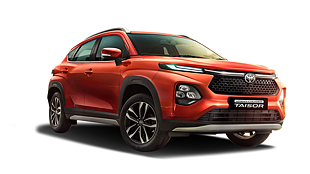What is a Spotter?
The spotter is the guy you will see running around frantically through the obstacles often shouting instructions to the driver, if not signalling. He is the one who plots the course because the driver of the rig is rarely in a position to see what is ahead or underneath. The spotter is the driver’s set of eyes one the ground, the one person that the driver absolutely trusts to manoeuvre him through the obstacles.

Off-roading, unlike rallying, is not about absolute speed. It is about making sure you traverse through the obstacles without getting stuck or damaging the rig which ultimately ensures that you turn out to be the winner. And that is where a good spotter makes a difference. Also the only reason why I got to go to the 2017 edition of our Off-Road Day.
What does a spotter do?
Ideally, when it comes to extreme off-roading, the driver is merely a robot who executes the spotter’s orders to the T. Don’t be surprised. Motorsports off the road have always been a team game. Ask any rally driver and he will tell you how blindly he follows the navigator’s instructions at that blistering pace. One pace note wrong and they will find themselves in a ditch but if the driver bothers about looking where to go, he will never be able to go as fast.

Ameya had made sure that our test obstacles were unsurmountable and the rig that goes the furthest takes the cake. While pushing as far as we can is the target, preserving the cars was going to be the key and that is where my role of being a spotter was vital. My job for the day was to ensure that each one of the cars reached the end of the day unscathed even if they did not finish a challenge or two.
How does he do it?
Communication is the most important part of the spotter-driver relationship. It includes hand-signals and verbal commands. When the driver is unable see the spotter, it is quite easy to get confused by voice commands. Go right can mean either the driver’s right or the spotter’s right depending upon where the spotter is facing. So when I said right, the driver had to go to his right and similarly for left. The hand signals are anyway self-explanatory and we finalised the communication protocol in a jiffy.

Spotting is a skill and it develops with experience. That is because depending upon the equipment the rig has, it can tackle the same obstacle in different ways. The course also depends upon the driver’s style and the spotter needs to know his strengths and weaknesses as well. And then, different cars, depending on their shapes and sizes will have to be plotted with different courses.
The gist of being a spotter is in the temperament. The driver might get carried away with all the slipping, sliding and bouncing that the car undergoes, but it is the spotter who is on his feet and has to have his head steady on his shoulders. The trick is to know exactly when to back off and when not to.

For example, the Tata Hexa was quite a handful up the hill-climb. In spite of having a 4x4, it does not get low range and when the rains stir up slush, the otherwise doable hill-climb become the slippery slopes of hell. The best way to tackle this obstacle was to carry the momentum. While I was directing Ameya through the easiest course, he was also fighting with the car. With the wheels spinning all the time, he had to modulate the horsepower using the clutch.
If we would have stuck to our one-go strategy, we would certainly have fried the clutch by the time we were up. So we stopped at spots where the ruts worked as stoppers and let the clutch regain its bite before we headed further.

We were almost near the top and the wheels were spinning frantically trying to find traction. We could clearly smell the burning clutch, but then, I insisted that Ameya keep going at full clip. Eventually, the tyres gripped and we made through. If we would have stopped, the caked tyres might not have been able to hold the 2-tonne Hexa on the hard slope with no rut edges to offer buffer.
What should a spotter look out for?
The easiest route out. Off-roading is often less about bravado and more about calculated risks. The angle of approach and departure and the ground clearance of a car define the traverse course. For example, the Jeep Compass’ air curtain under the front bumper limited its approach to a large extent (about 25 degrees). So when we approached steeper slopes, we angled our entry in. But you might not be able to do that every time. If you need momentum to haul the car up, the angled approach will create more problems.

The Volkswagen Tiguan has better approach and departure clearances than the Compass, but has lower ground clearance. So instead of taking the ruts, we had to make sure the wheels went over the rocks so that the underbody was safe all the time. Also, the torque-on-demand all-wheel drive made sure that there was no unnecessary wheel-spin by modulating power which made the driver’s job easier and hence the spotter’s job as well.
The spotter's choice
Well, if I had to choose my favourite in the line-up, it would have been a tough choice between the Isuzu V-Cross and the Toyota Fortuner. While the V-Cross is a tattooed MMA fighter, the Toyota Fortuner is the classic boxer in a tuxedo and both can land equally brutal punches. The V-Cross is lighter and had the advantage of sporting proper aftermarket off-road tyres to begin with. Also the clearance angles being much wider, the spotter didn’t have much to worry except for its length. Manoeuvring this 5000+mm rig through tight turns was tedious with you often having to reverse. But then the grip it offered and the low-range four-wheel torque made a joke out of every challenge.

The Fortuner, in spite of its tuxedo manners, had a trick up its sleeve, the automatic. For novice off-roaders, who are yet to understand the art of throttle control, the automatic gearbox is a huge advantage. It modulates the power and learning how to control it is much easier, making hill-climb or hill-descent much easier. The high ground clearance and laudable approach and departure angles make it a capable off-roader. Just add the chunky mountain terrain tyres to it and you are good to go out in the woods. Just make sure you have a good spotter who will stop you from going overboard.

Click here to read Carwale Off-Road Day 2017 introduction
Click here to read about the Isuzu D-Max V-Cross at the CarWale Off-Road Day 2017
Click here to read about the Tata Hexa at the CarWale Off-Road Day 2017
Click here to read about the Jeep Compass at the CarWale Off-Road Day 2017
Click here to read about the Toyota Fortuner at the CarWale Off-Road Day 2017
Click here to read about the Volkswagen Tiguan at the CarWale Off-Road Day 2017

![Toyota Fortuner [2016-2021] Image Toyota Fortuner [2016-2021] Image](https://imgd.aeplcdn.com/272x153/n/cw/ec/19812/fortuner-exterior-right-front-three-quarter-2.jpeg?q=80)
![Toyota Fortuner [2016-2021] Right Front Three Quarter Toyota Fortuner [2016-2021] Right Front Three Quarter](https://imgd.aeplcdn.com/199x112/n/cw/ec/19812/fortuner-exterior-right-front-three-quarter-2.jpeg?q=80)
![Toyota Fortuner [2016-2021] Right Front Three Quarter Toyota Fortuner [2016-2021] Right Front Three Quarter](https://imgd.aeplcdn.com/199x112/n/cw/ec/19812/fortuner-exterior-right-front-three-quarter.jpeg?q=80)
![Toyota Fortuner [2016-2021] Right Side View Toyota Fortuner [2016-2021] Right Side View](https://imgd.aeplcdn.com/199x112/n/cw/ec/19812/fortuner-exterior-right-side-view.jpeg?q=80)
![Toyota Fortuner [2016-2021] Dashboard Toyota Fortuner [2016-2021] Dashboard](https://imgd.aeplcdn.com/199x112/n/cw/ec/19812/fortuner-interior-dashboard.jpeg?q=80)
![Toyota Fortuner [2016-2021] Steering Wheel Toyota Fortuner [2016-2021] Steering Wheel](https://imgd.aeplcdn.com/468x263/n/cw/ec/19812/fortuner-interior-steering-wheel.jpeg?q=80)
























